Tilicho Lake: Nepal’s Highest Glacial Lake and Trekking Paradise
Tilicho Lake, perched at an astonishing 4,919 meters (16,138 feet), is one of the world’s highest glacial lakes and a premier destination for high-altitude trekking in Nepal.
Nestled in the Manang District of Gandaki Province, this turquoise gem draws adventurers and spiritual seekers to the heart of the Annapurna massif. Known for its remote location and stunning natural beauty, Tilicho Lake offers a challenging yet rewarding experience for those seeking adventure in the Himalayas.
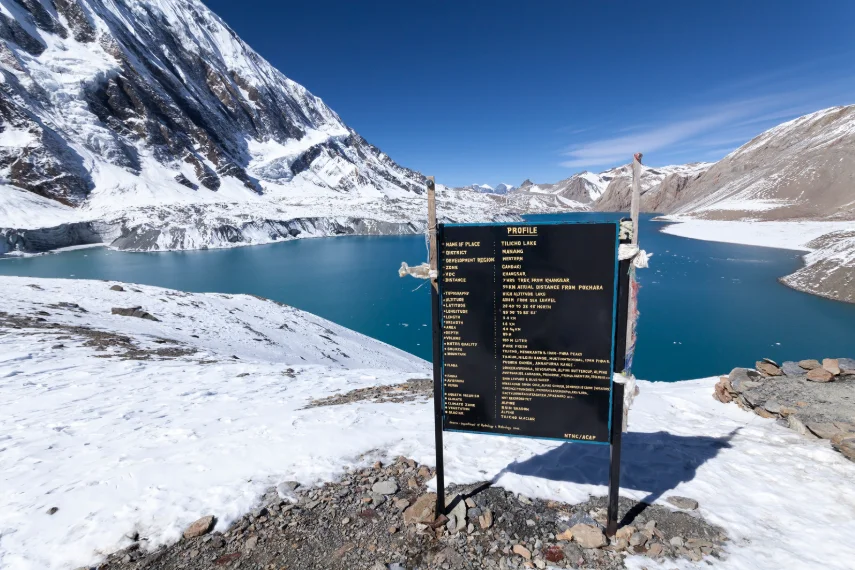
Geographic Marvel and Formation
The Tilicho Lake trek unveils a geological masterpiece shaped by thousands of years of glacial activity. This high-altitude lake lies in a dramatic cirque, encircled by towering peaks such as Tilicho Peak (7,134m), Khangsar Kang (7,485m), and Muktinath Himal (6,706m).
Spanning approximately 4 kilometers in length and 1.2 kilometers in width, the lake’s vibrant turquoise waters contrast vividly with the rugged, snow-dusted peaks. Its formation is a testament to the region’s glacial history, with meltwater collecting in a basin carved by ancient ice flows, creating a serene yet stark high-altitude sanctuary that captivates every visitor.
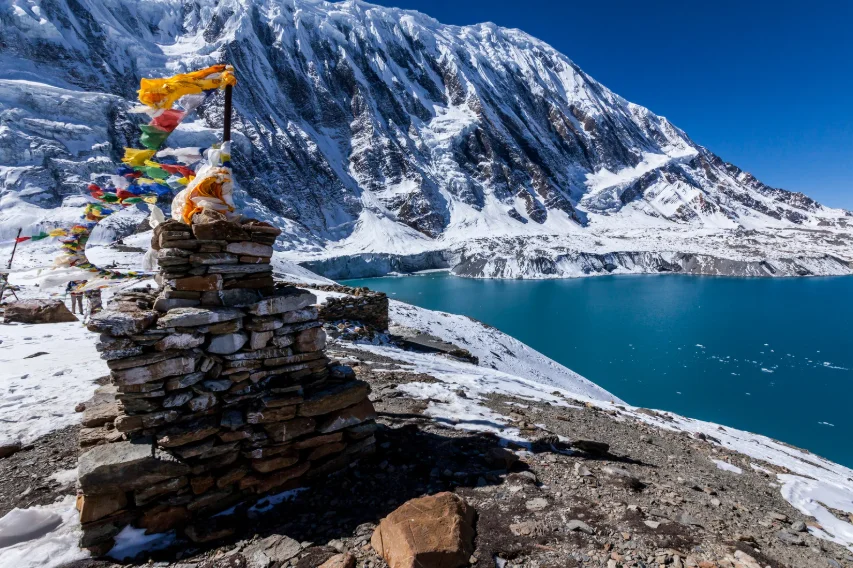
The Ultimate High-Altitude Trekking Experience
Trekking to Tilicho Lake is a bucket-list adventure for thrill-seekers and nature enthusiasts. The journey typically starts in Manang village (3,519m), a key stop on the renowned Annapurna Circuit.
From Manang, trekkers diverge onto a rugged path toward Tilicho, navigating steep ascents, rocky trails, and unpredictable weather. The route demands physical endurance and mental resilience, with high-altitude conditions testing even seasoned trekkers. Along the way, panoramic views of the Annapurna range and glimpses of local wildlife, such as blue sheep and Himalayan birds, enrich the experience.
Most itineraries include an overnight stay at Tilicho Base Camp (4,150m), a vital acclimatization stop. The base camp, surrounded by jagged peaks, offers a chance to rest and prepare for the final ascent to the lake. This leg of the journey, though strenuous, rewards trekkers with unparalleled views of the lake’s shimmering waters against a backdrop of snow-clad mountains, making it a highlight of Nepal trekking adventures.
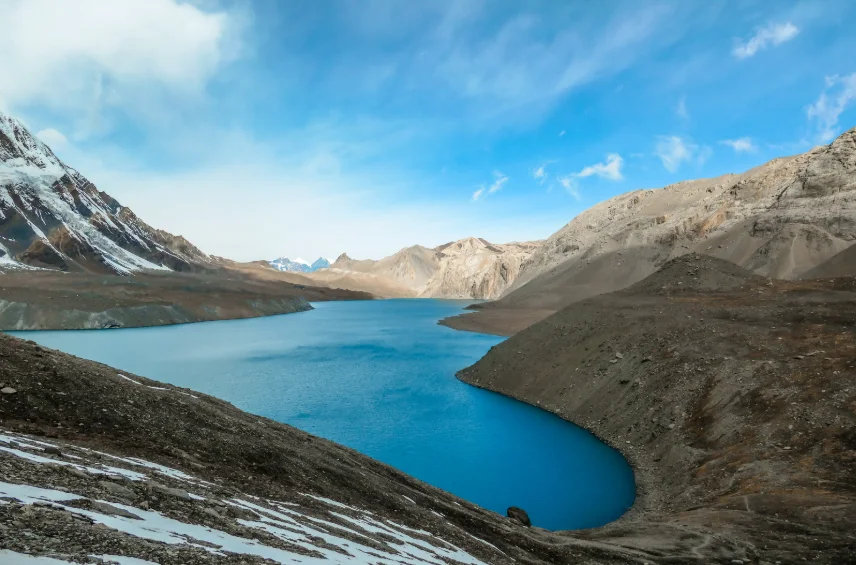
Best Time to Visit and Weather Conditions
The best seasons for Tilicho Lake trekking are pre-monsoon (March to May) and post-monsoon (September to November). These periods offer stable weather, clear skies, and optimal trekking conditions. Spring (March–May) transforms lower elevations with vibrant rhododendron blooms, adding bursts of red and pink to the landscape.
Autumn (September–November) provides crisp air and unobstructed views of the eight-thousander peaks, including nearby Annapurna I (8,091m). Both seasons ensure safer trails and better visibility, critical for high-altitude navigation.
Winter (December to February) brings extreme cold and heavy snowfall, often closing the route to Tilicho Lake. Monsoon season (June to August) poses risks of landslides, muddy trails, and poor visibility due to heavy rains, making it unsuitable for most trekkers. Planning your trek during the optimal seasons ensures a safer and more enjoyable experience in this remote Himalayan region.
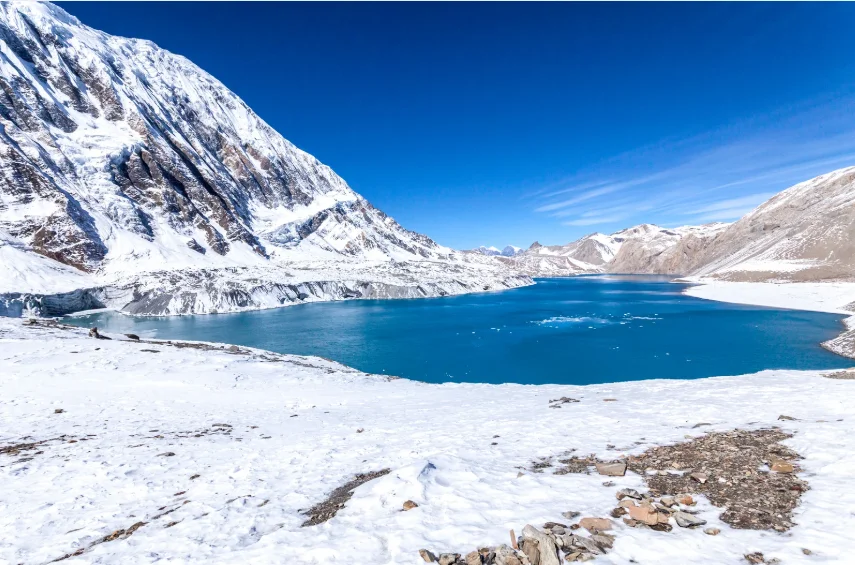
Essential Preparations and Safety Considerations
Altitude sickness prevention is critical for a safe Tilicho Lake trek. Acute mountain sickness (AMS) can affect even fit trekkers at 4,919m, so gradual acclimatization is essential. Spend extra days in Manang or at Tilicho Base Camp to adjust to the altitude, stay hydrated, and monitor for symptoms like headaches or dizziness.
Essential gear includes a four-season sleeping bag rated for sub-zero temperatures, high-altitude trekking boots, layered clothing (moisture-wicking base layers, insulating mid-layers, and waterproof outer shells), and a well-stocked first-aid kit with AMS medications like Diamox.
Physical preparation should begin months in advance, focusing on cardiovascular fitness, leg strength, and stamina through activities like hiking, running, and stair climbing. While prior high-altitude experience is helpful, beginners with proper training can succeed with guidance from experienced porters or guides. Familiarity with basic mountaineering techniques, such as using trekking poles or navigating scree slopes, enhances safety on the challenging terrain.
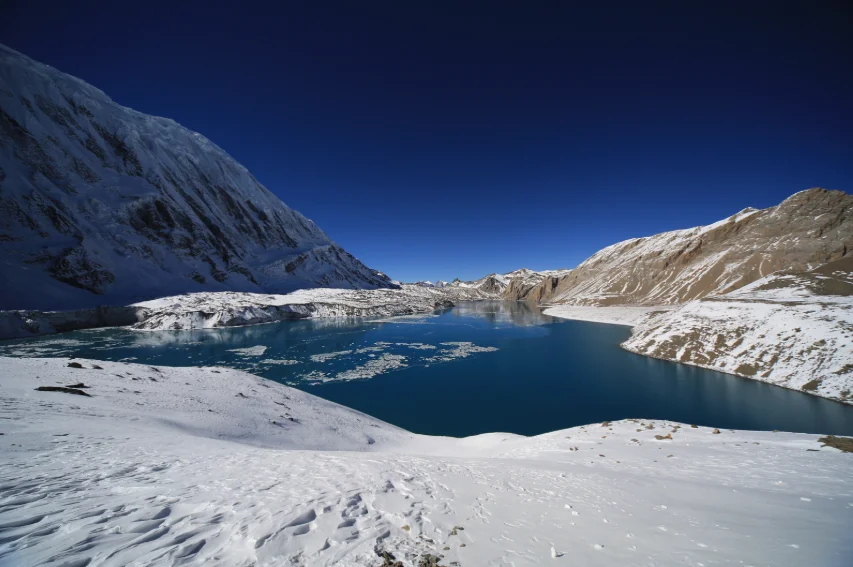
Cultural and Spiritual Significance
Tilicho Lake is more than a natural wonder; it holds profound spiritual significance in Hindu and Buddhist traditions. The Sherpa and Gurung communities revere the lake as a sacred site, believing its waters possess purifying qualities.
Pilgrims often visit to meditate or perform rituals, seeking spiritual cleansing and blessings. The presence of prayer flags fluttering in the Himalayan winds underscores the lake’s role as a place of reverence, blending adventure with spiritual fulfillment for trekkers and devotees alike.
Conservation and Environmental Impact
Tilicho Lake lies within the Annapurna Conservation Area, a protected region dedicated to preserving its delicate ecosystem. However, rising tourist numbers threaten the area’s pristine environment through littering and trail erosion.
Trekkers must adopt responsible practices, such as carrying out all waste, using reusable water bottles, and sticking to designated paths to minimize impact. Supporting local conservation initiatives and hiring eco-conscious guides further ensures that Tilicho Lake remains a pristine destination for future generations.
Tilicho Lake is a testament to the raw beauty and spiritual depth of the Himalayas. Its challenging trek, breathtaking vistas, and cultural significance make it a must-visit for adventurers and pilgrims. Whether you’re drawn by the thrill of high-altitude trekking or the serenity of a sacred site, Tilicho Lake promises an unforgettable journey into one of Earth’s most spectacular landscapes.
Book your Tilicho Lake trek: Here
Planning your Tilicho Lake trek? Prioritize physical fitness, proper acclimatization, and eco-friendly practices. Hire experienced guides for a safe and enriching adventure in Nepal’s Annapurna region.